
Practical Immunology and Serology
Hawler Medical University
College of Health Sciences
Medical Microbiology Dept.
Ass. Lec. Amer Ali Khaleel
(M.Sc. Medical Immunology)
Lab.3
Immunochromatographic assays
3
rd
stage
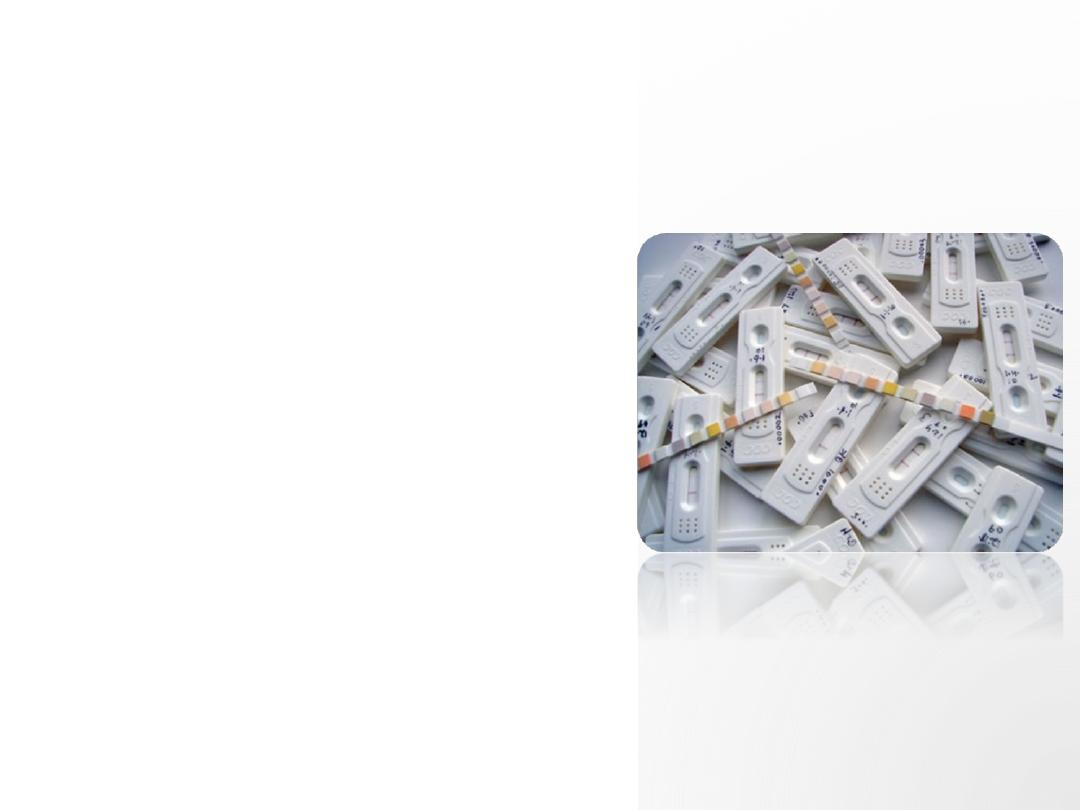
Introduction:
Immunochromatographic
assays, also called lateral
flow dipstick immunoassay or
simply strip tests,They are a
logical extension of the
technology used in latex
agglutination tests, the first of
which was developed in 1956
by Singer and Plotz.

Principal of Immunochromatography kit:
Principal of immunochromatography is the same as ELISA
sandwich method, only difference is in that immunological
reaction is carried out on the chromatographic paper
by capillary action. For this system, two kinds of specific
antibodies against antigen are used.One of the antibodies is
immobilized on the chromatographic paper, and the other is
labeled with colloidal gold and infiltrated into sample pad.
An immunochromatographic unit is completed by attaching the
sample pad at the end of the membrane.

Principal of Immunochromatography kit:
When the liquid sample is dropped on the sample pad,
the antigen in the sample forms an immunocomplex with the
antibody labeled with colloidal gold.
Its complex moves along with the liquid sample, and makes a
contact with the antibody immobilized on the membrane,
followed by forming an immunocomplex with the immobilized
antibody, resulting in generating a colored red purple line.
Appearance of red purple line on the membrane indicates
the presence of antigen of interest in the sample. Since the liquid
of the sample migrates through the membrane very fast, it
makes it possible to detect the presence or absence of antigen
within 15 minutes.
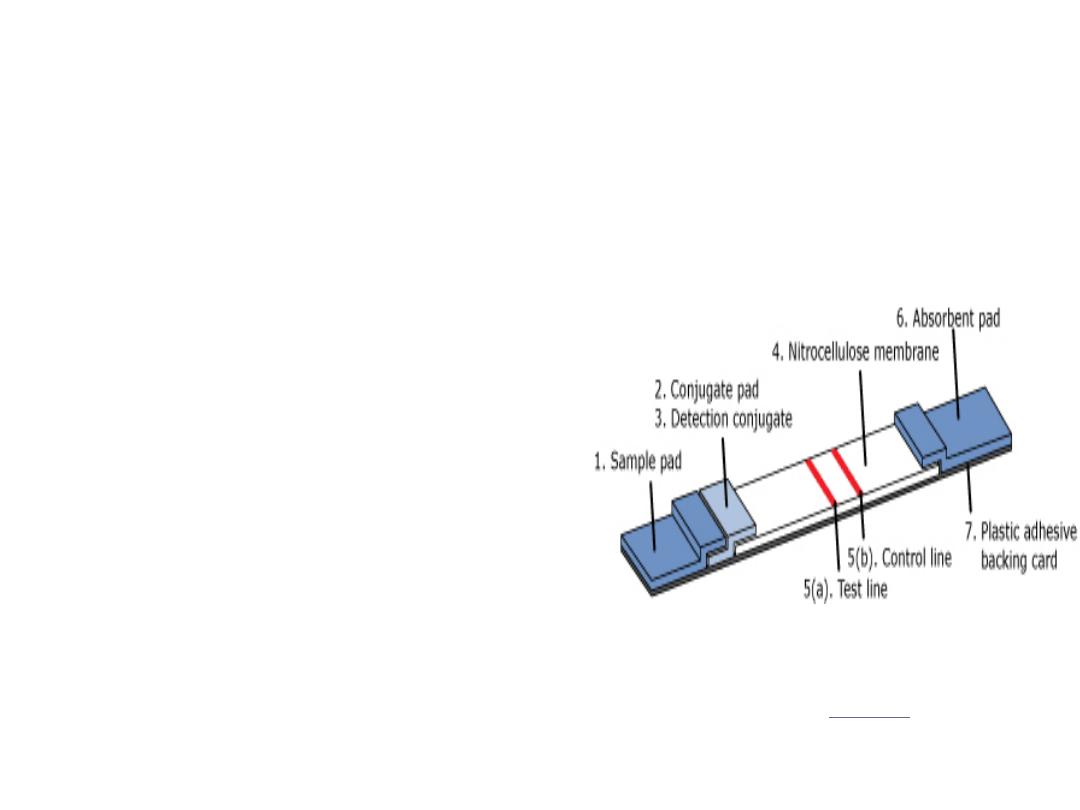
Basic Components of Lateral flow test:
1. Sample pad.
2. Conjugate (detector) pad.
3. Detection conjugate.
4. Nitro-cellulose membrane.
5. Test and control reagent lines.
6. Absorbent (sink) pad.
7. Plastic-adhesive backing card.
The following components are “optional”
and are not necessary or included in many
lateral flow platforms:
8. Laminate Tape.
9. A Strip housing / Cassette.
Typical lateral flow test strip configuration
(Card,
, Strip)

Lateral flow tests: how they work:
Step 1: Sample placement
To perform the test, a sample is placed on the sample pad at
one end of the strip. The sample may be used alone as is
commonly done with urine or serum or whole blood or plasma
compatible tests, or it may be mixed with a buffer specific to the
test.
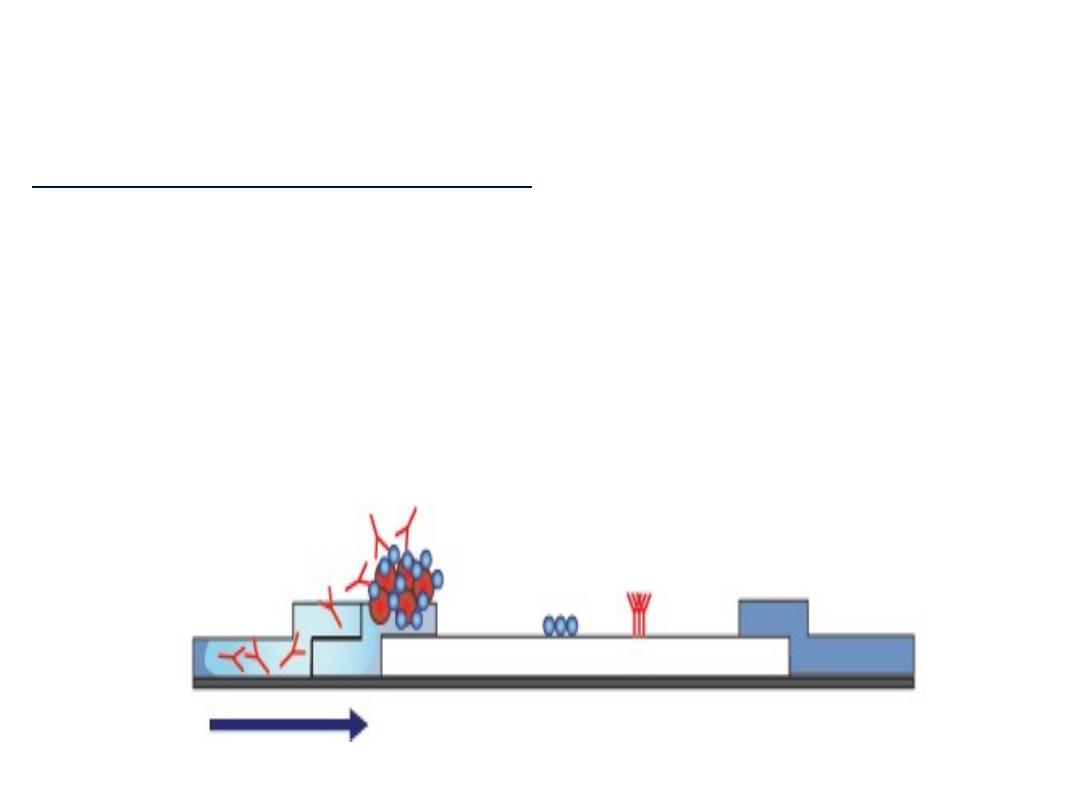
Lateral flow tests: how they work:
Step 2: Molecules solubilized
With the addition of the sample, the detector molecules are
solubilized. When solubilized the detector molecules mix with
and bind to the analyte in the sample (if analyte is present).
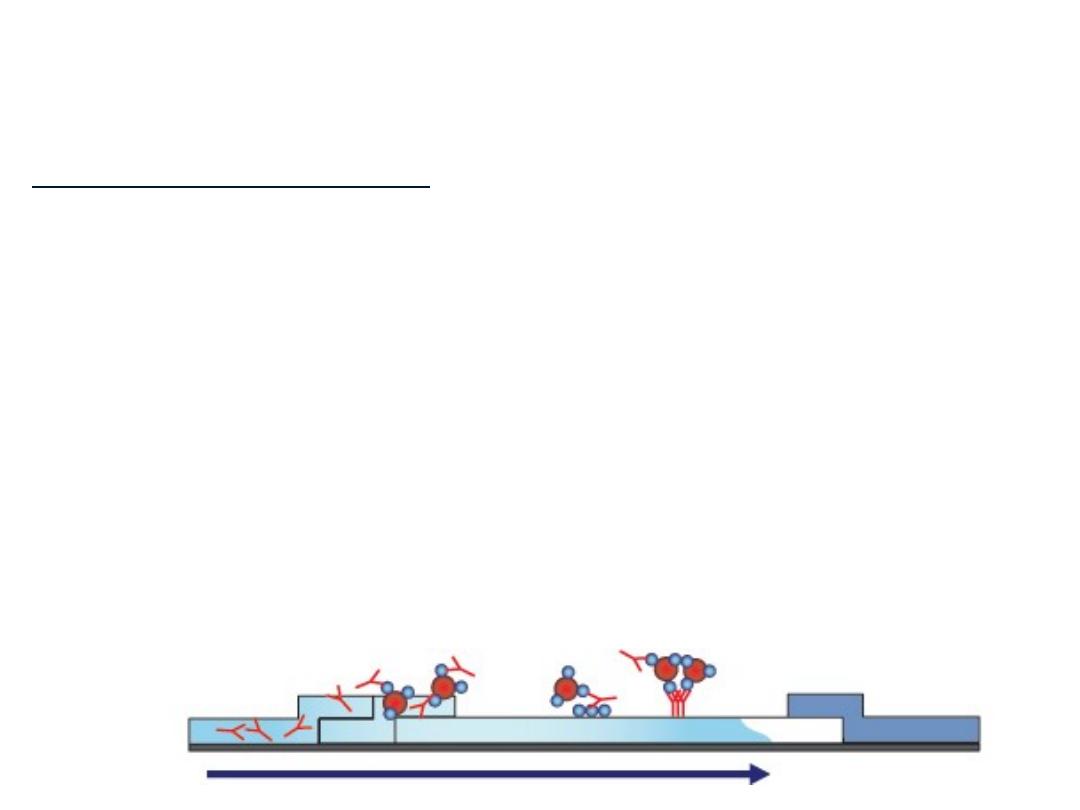
Lateral flow tests: how they work:
Step 3: Capillary action
Then capillary action draws the fluid mixture up the sample pad
and into the membrane. The sample/detector molecule mix
continues to move up the membrane until it reaches the analyte
capture molecule. In these lines a second (and third) antibody or
antigen, immobilized as a thin stripe in the nitrocellulose will then
capture the complex if it is positive for the target analyte. The
control line should always show as a visible line, otherwise the
test is invalid and must be repeated. If the test is positive, a
colored (typically pink or purple) line develops along with the
control line.
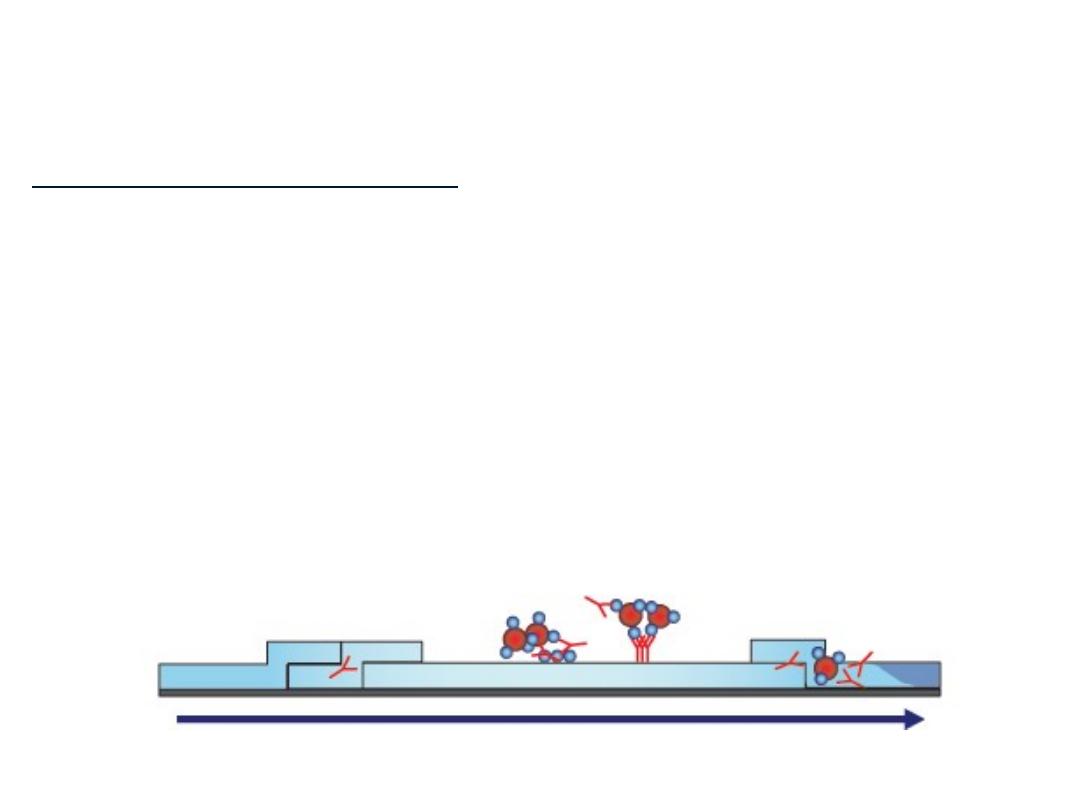
Lateral flow tests: how they work:
Step 4: Excess absorbed
Excess buffer along with any reagents not captured at the test of
control line will then move into the absorbent wicking pad.

The benefits of immunochromatographic
tests includes:
1.Can detect antigen or antibody.
2.Commercially available.
3.Easy to perform.
4.Limited/no instrumentation.
5.Single use, rapid test.
6.User friendly format.
7.Very short time to get test result.
8.Long-term stability over a wide range of climates.
9.Relatively inexpensive to make.
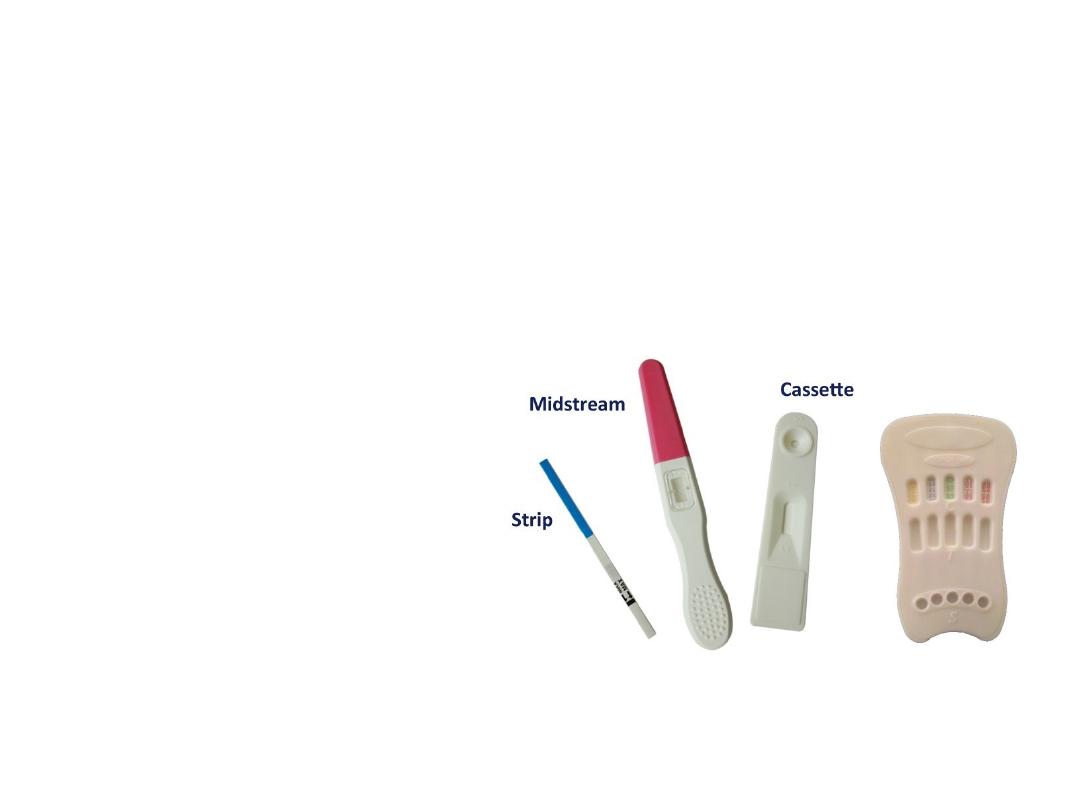
Limitations:
1-Results are qualitative.
2-Rapid tests can be less sensitive or less accurate compared to
existing tests.
Includes
Strip
or Cassette
or Multi-devices
or Midstream (hCG & LH only).
Test format:
Multi-devices

Applications of Immunochromatographic
assays:
It can be applied for multiple test platforms for liver, sexually
transmitted diseases, cardiac markers, as well as women’s and
men’s health (hCG, VDRL, CMV, PSA , H. Pylori, Troponin I,
TORCH, HIV, HBsAg, HBV, HCV, FOB, RA, CRP, ASO, SLE,
IM, Salmonella IgM & IgG , Toxoplasma IgG & IgM, Rubella IgG
& IgM …).

Any Questions ??!!!
